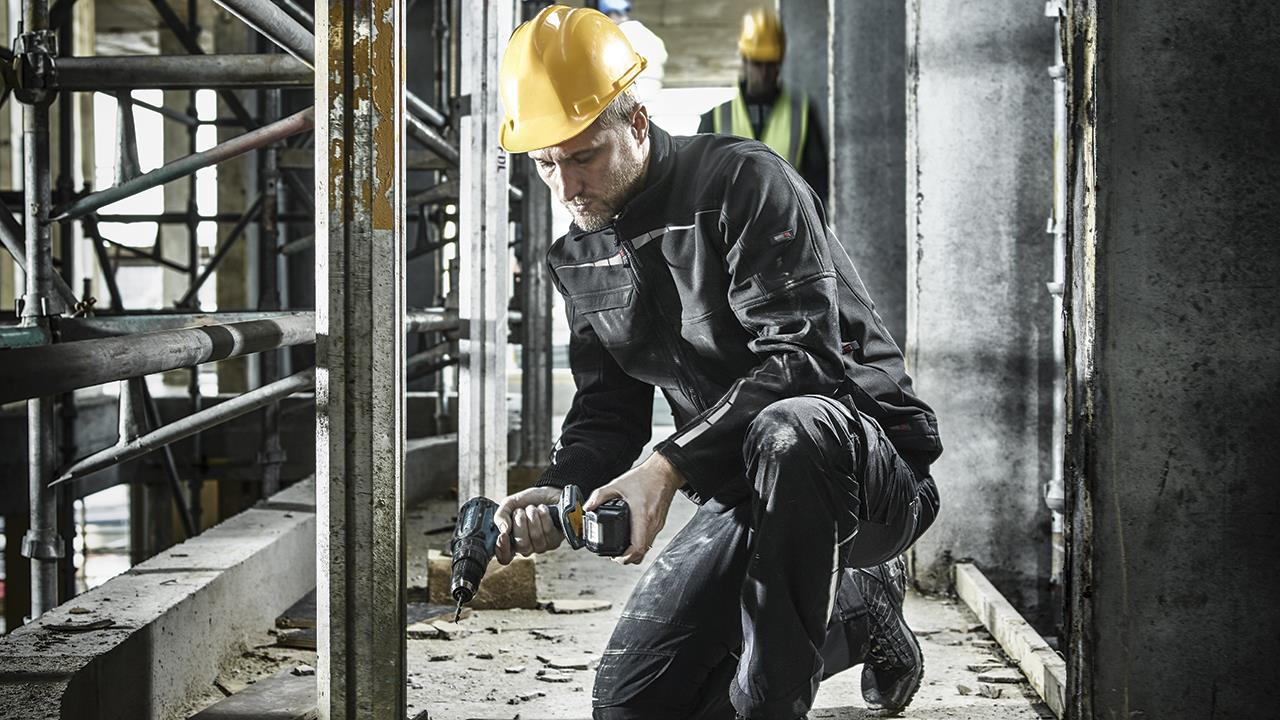

James Whitaker, Marketing Director at Dickies Workwear, shares his advice on what to consider when shopping for protective clothing and footwear.
The coronavirus outbreak has put PPE in the spotlight, with calls to protect frontline healthcare workers hitting the headlines. With PPE such a big topic, it’s a reminder to everyone of the importance of staying safe while working.
While most plumbers will be aware of the basic purposes of PPE, keeping up with what’s required by health and safety regulations can be tricky. Plus, with the wide range of safety wear available, where do you start when making sure that you’re suitably protected?
On your feet
When shopping for safety footwear, look for shoes or boots bearing the S3 classification, which means they’ll offer an anti-penetration insole (preventing injury should you accidentally step on sharp objects such as loose nails), plus resistance to water penetration and absorption, as well as offering toe protection.
Also look out for a slip-resistant outsole – any shoe offering SRC slip resistance helps to prevent slipping on a ceramic tile or steel surface. This is the highest level of protection of slip resistance available.
As most plumbers spend much of their days bending or kneeling, choose safety footwear that’s flexible and that doesn’t feel too heavy. Boots and shoes that include composite toe protection are lighter in weight than traditional steel toe-capped styles.
Stay flexible
Similarly, trousers designed with flexible fabric are worth investing in, as the freedom of movement they offer will help keep you comfortable throughout the day. Elasticated waistbands will help protect your back, while practical features, such as plenty of pockets, are a must.
Be seen
If you’re working in poor lighting conditions, you’ll need to think about hi-vis clothing.
All hi-vis clothing must conform to the required EN 471 British Standard, which sets out a number of guidelines, including that the wearer can be seen from any angle.
Within this standard, there are three classes of hi-vis – ranging from Class 1 to Class 3. These are ranked according to the volume of fluorescent and retroflective surface areas they include, with Class 3 providing the highest level of visibility.
These days, there are lots of hi-vis options available, from hoodies and sweatshirts, to jackets, t-shirts, trousers, and coveralls (including waterproof options), so it’s possible to find something that fits with your usual working ‘uniform’. With the warmer months upon us, a breathable yet waterproof lightweight jacket is a good place to start for a hi-vis item that will see you through to Autumn.
Also, remember it’s important that hi-vis clothing is kept clean to ensure you remain visible, so go for items that are easy to wash.
Sun protection
While we’re well aware of the importance of sun protection for our skin, you might not think about clothing that protects you from UV rays, but there are many summer workwear items that do just that.
For example, there are t-shirts that are light, breathable, and offer Ultraviolet Protection Factor (UPF) 45+. The UPF rating is similar to the sun protection factor used for sunscreens.
Protective accessories
If you’re working on a job that requires a safety helmet, many styles include eye and ear protection as well. On that note, you may not need ear protection while working on Mr Smith’s hot water cylinder, but you might if you’re on a newbuild development where there’s still piling going on, so think about where you might need ear defenders, or ear plugs, as part of your PPE kit.
Respiratory Protective Equipment shouldn’t be overlooked either. For example, when working in a newly plastered house you’ll be constantly surrounded by dust, which you can safely keep out of your throat, nose, and lungs by using respirators and dust masks.
It may sound obvious, but thermal gloves will keep your hands protected in colder environments, while performance gloves will protect them in all kinds of conditions. Look for styles that offer this protection without restricting movement.
As a further point on comfort, kneepads are important on days when you’re likely to spend a good deal of time kneeling at work, to prevent pain and potential long-term damage.
There’s a huge range of safety clothing and footwear on the market, and most manufacturers will include details on their labels, packaging, catalogues, and websites that make it easy to see which safety features are included.
Plus, with the variety of styles available, it should be easy to find something that offers you the protection you need to stay safe at work, while also cultivating a professional image.
If you'd like to keep up-to-date with the latest developments in the heating and plumbing industry, why not subscribe to our weekly newsletters? Just click the button below and you can ensure all the latest industry news and new product information lands in your inbox every week.